



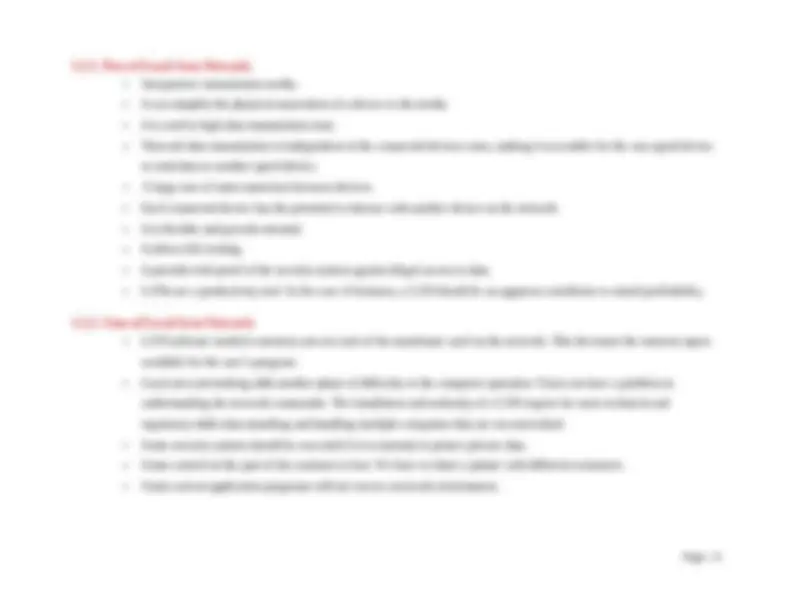
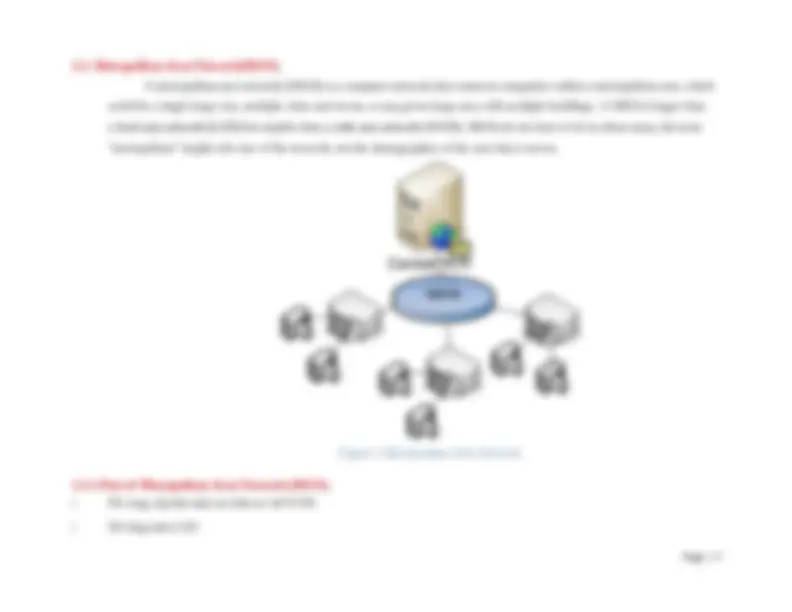

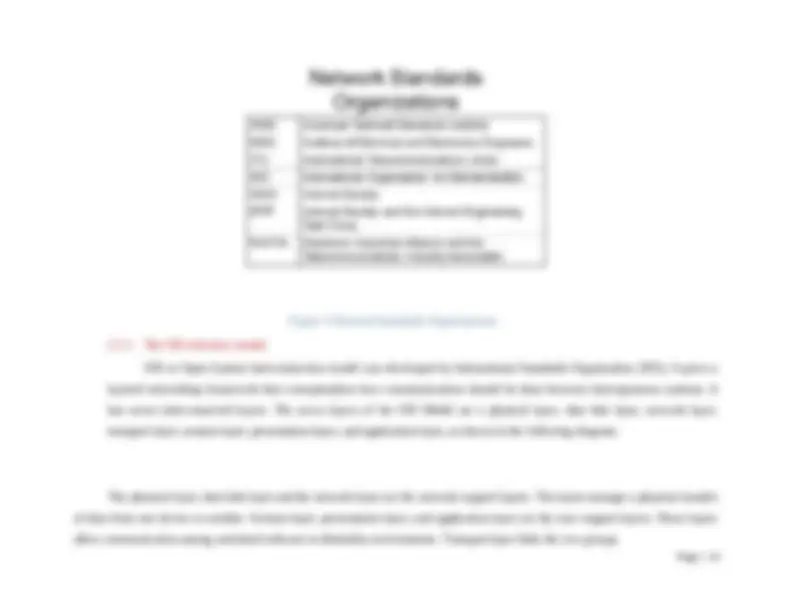

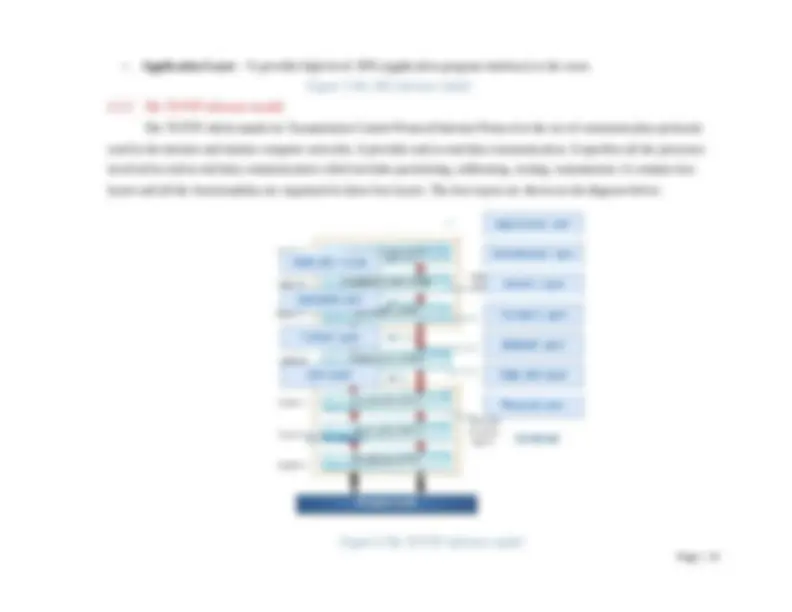

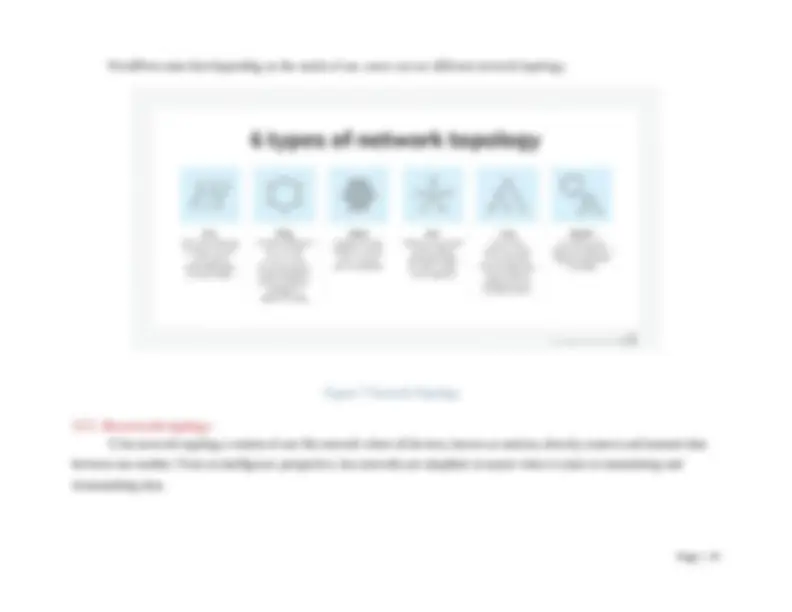
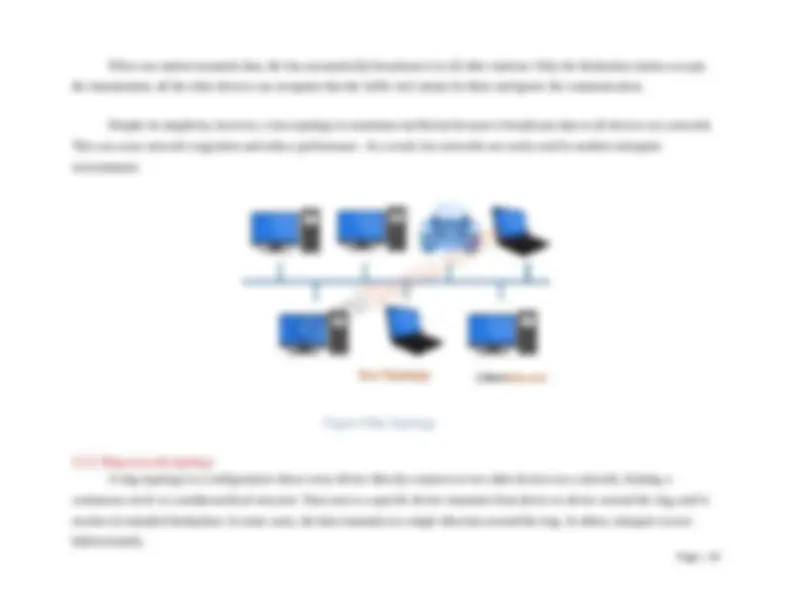
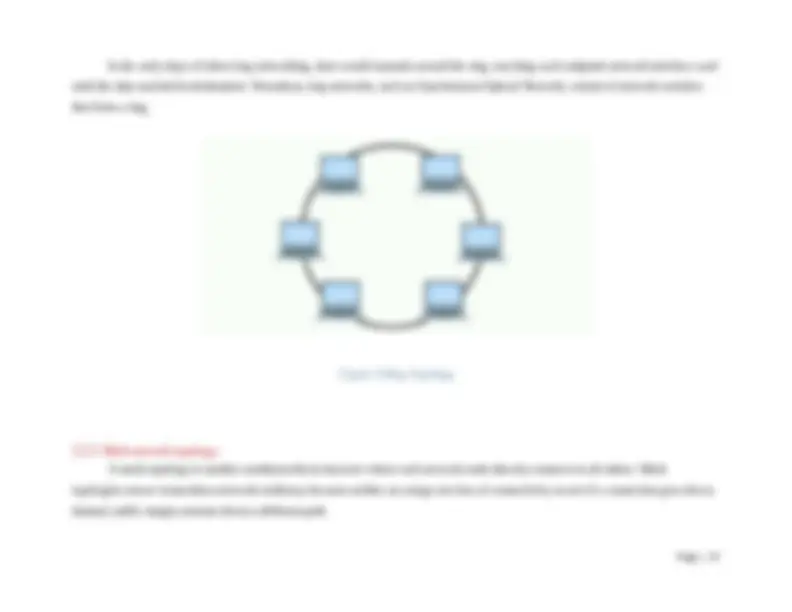
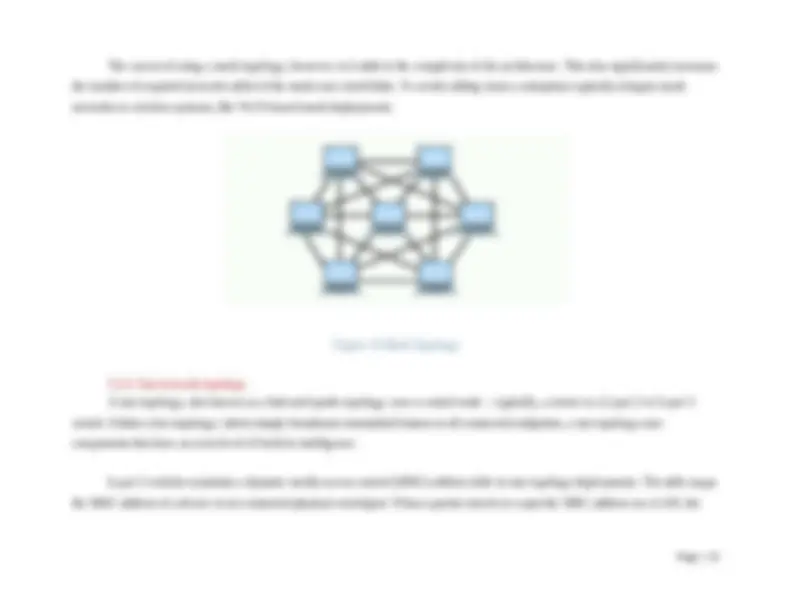
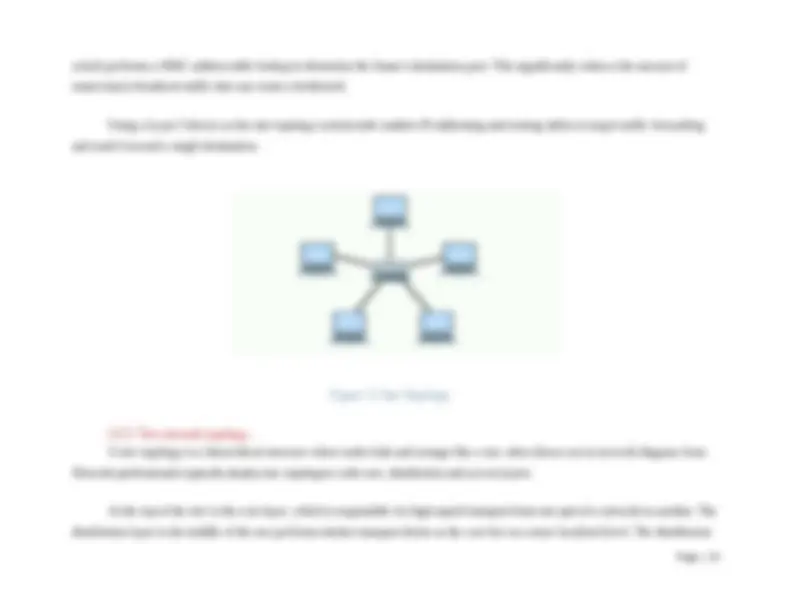

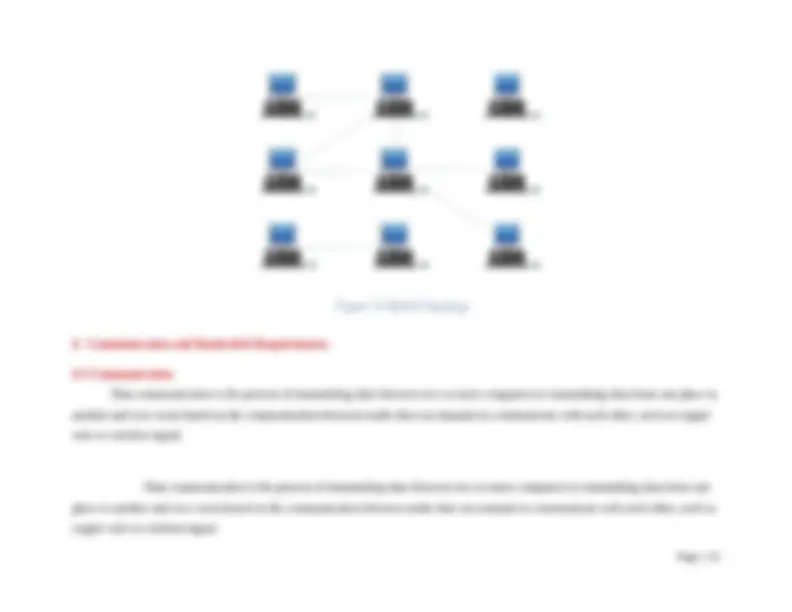



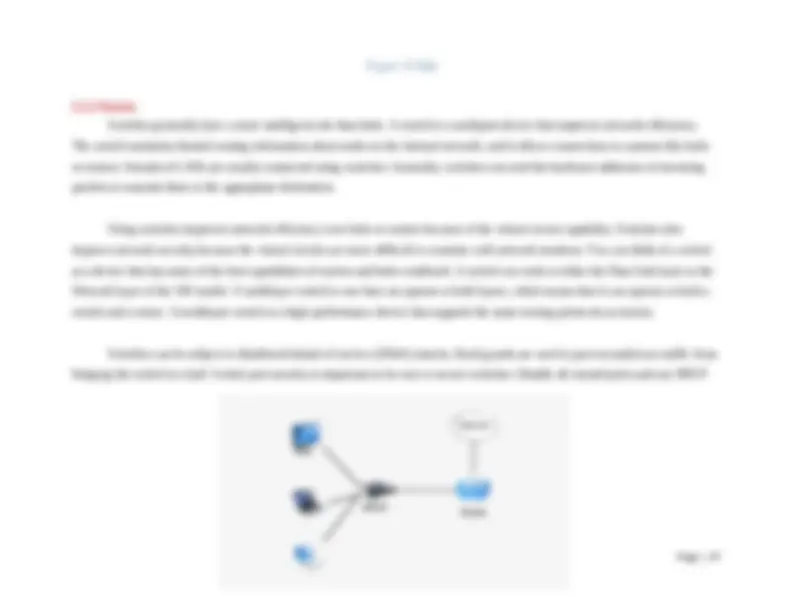


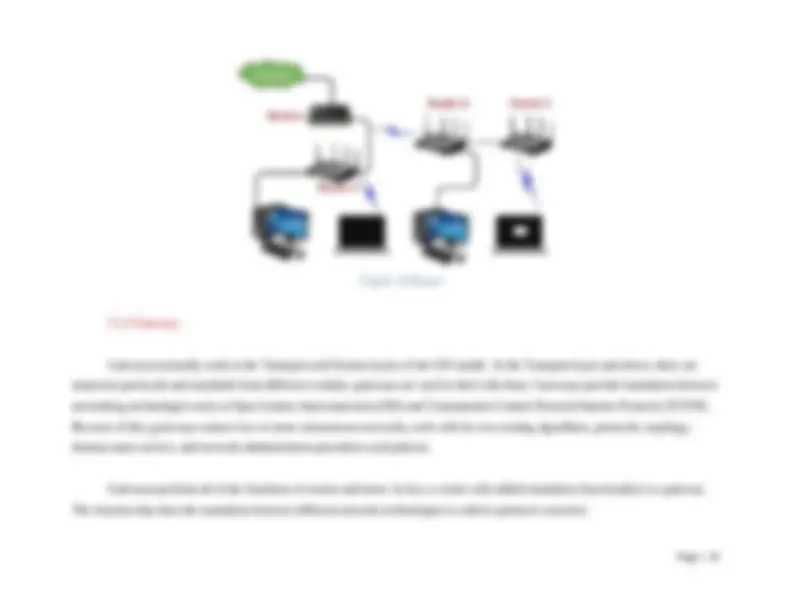
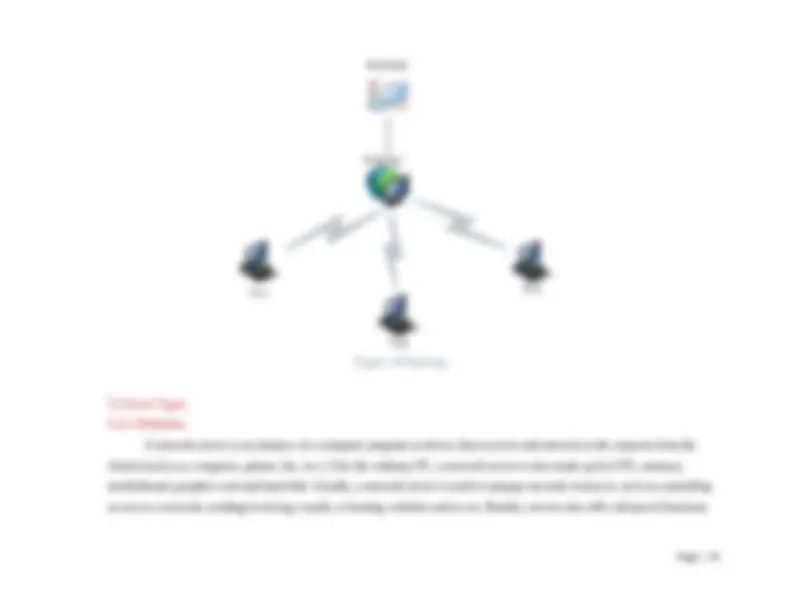



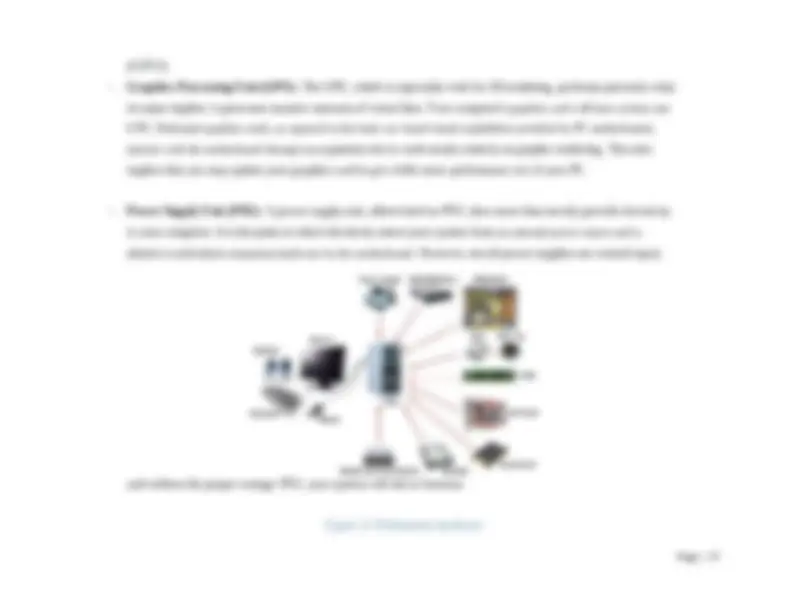










Study with the several resources on Docsity

Earn points by helping other students or get them with a premium plan


Prepare for your exams
Study with the several resources on Docsity

Earn points to download
Earn points by helping other students or get them with a premium plan
Community
Ask the community for help and clear up your study doubts
Discover the best universities in your country according to Docsity users
Free resources
Download our free guides on studying techniques, anxiety management strategies, and thesis advice from Docsity tutors
An overview of different types of computer networks, including local area networks (lans), metropolitan area networks (mans), and wide area networks (wans). It discusses the importance of network standards, such as the osi model and the tcp/ip protocol suite, in enabling communication between devices on a network. The document also covers various network topologies, including bus, ring, mesh, star, tree, and hybrid topologies, and explains how they impact the flow of data across the network. Additionally, it delves into network devices like hubs, switches, and routers, highlighting their roles in improving network efficiency and security. The document concludes by emphasizing the significance of selecting an appropriate network design and infrastructure to meet the specific requirements of a given scenario.
Typology: Exercises
1 / 45

This page cannot be seen from the preview
Don't miss anything!






































Qualification BTEC Level 5 HND Diploma in Computing Unit number and title Unit 2: Networking Infrastructure Submission date 22/8/2022 Date Received 1st submission Re-submission Date Date Received 2nd submission Student Name Le Van Thuan Student ID: BHAF Class IT0504 Assessor name Le Van Thuan Student declaration I certify that the assignment submission is entirely my own work and I fully understand the consequences of plagiarism. I understand that making a false declaration is a form of malpractice. Student’s signature Your name heare Grading grid P1 P2 P3 P4 M1 M2 D
Grade: Assessor Signature: Date: Signature & Date:
Error! Hyperlink reference not valid. B. CONTENT........................................................................................................................................................................................................... 6 Error! Hyperlink reference not valid. 1.1.Local Area Network (LAN).......................................................................................................................................................................... 7 Error! Hyperlink reference not valid. 1.3. Wide Area Network (WAN):...................................................................................................................................................................... 11 Error! Hyperlink reference not valid. 2.1.Definition about network Standards............................................................................................................................................................. 12 Error! Hyperlink reference not valid. 3.Impact of network topology............................................................................................................................................................................... 18 Error! Hyperlink reference not valid. 3.2 Type of Topology........................................................................................................................................................................................ 19 Error! Hyperlink reference not valid.
4.1 Communication............................................................................................................................................................................................ 25 Error! Hyperlink reference not valid. 4.3 Throughput.................................................................................................................................................................................................. 27 Error! Hyperlink reference not valid. 5.2 Sever Types.................................................................................................................................................................................................. 33 Error! Hyperlink reference not valid. 7.1 Workstation hardware................................................................................................................................................................................. 36 Error! Hyperlink reference not valid. C. CONCLUSION......................................................................................................................................................................................................... 39 Error! Hyperlink reference not valid.
1.1.1. Pros of Local Area Network: Inexpensive transmission media. It can simplify the physical association of a device to the media. It is used to high data transmission rates. Network data transmission is independent of the connected devices rates, making it accessible for the one-speed device to send data to another speed device. A large rate of interconnection between devices. Each connected device has the potential to interact with another device on the network. It is flexible and growth-oriented. It allows file locking. It provides full proof of the security system against illegal access to data. LANs are a productivity tool. In the case of business, a LAN should be an apparent contributor to raised profitability. 1.1.2. Cons of Local Area Network: LAN software needed a memory area in each of the mainframe used on the network. This decreases the memory space available for the user’s program. Local area networking adds another phase of difficulty to the computer operation. Users can have a problem in understanding the network commands. The installation and authority of a LAN require far more technical and regulatory skills than installing and handling multiple computers that are not networked. Some security system should be executed if it is essential to protect private data. Some control on the part of the customer is lost. We have to share a printer with different customers. Some current application programs will not run in a network environment.
Nó giúp tiết kiệm chi phí chia sẻ các tài nguyên chung như máy in, v.v. Nó giúp mọi người giao tiếp các mạng LAN nhanh chóng với nhau. Điều này là do việc triển khai các liên kết dễ dàng. MAN yêu cầu ít tài nguyên hơn so với WAN. Điều này giúp tiết kiệm chi phí thực hiện. Bus kép được sử dụng trong MAN giúp truyền dữ liệu theo cả hai hướng đồng thời. Nó cung cấp một đường trục tốt cho một mạng lớn và cũng cung cấp khả năng truy cập nhiều hơn vào WAN. MAN thường bao gồm một số khối thành phố hoặc toàn bộ thành phố. Tăng hiệu quả xử lý dữ liệu. Tăng tốc độ truyền dữ liệu. Liên kết dễ thực hiện. Tiết kiệm chi phí đính kèm để thiết lập mạng diện rộng. 1.2.2. Cons of Metropolitan Area Network (MAN): More cable require for a MAN connection from one place to another. The data rate is slow compared to LAN. It is difficult to make a system secure from hackers. The large network difficult to manage. It is difficult to secure the network once its becomes large. Network installation require skilled technicians and network administrators. This increases overall installation and management costs. Cost is higher than LAN. While we move our network to another city or area it doesn't work.
1.3. Wide Area Network (WAN): In its simplest form, a wide-area network (WAN) is a collection of local-area networks (LANs) or other networks that communicate with one another. A WAN is essentially a network of networks, with the Internet the world's largest WAN. Today, there are several types of WANs, built for a variety of use cases that touch virtually every aspect of modern life. Figure 3 Wde Area Network 1.3.1. Pros of Wide Area Network (WAN): Increase efficiency. Easy of communication. Large network cover. Share information over the large area. Message can be sent very quickly to anyone else on the network. It supports the global market and global business.
Figure 4 Network Standards Organizations 2.1.1 The OSI reference model. OSI or Open System Interconnection model was developed by International Standards Organization (ISO). It gives a layered networking framework that conceptualizes how communications should be done between heterogeneous systems. It has seven interconnected layers. The seven layers of the OSI Model are a physical layer, data link layer, network layer, transport layer, session layer, presentation layer, and application layer, as shown in the following diagram: The physical layer, data link layer and the network layer are the network support layers. The layers manage a physical transfer of data from one device to another. Session layer, presentation layer, and application layer are the user support layers. These layers allow communication among unrelated software in dissimilar environments. Transport layer links the two groups.
The main functions of each of the layers are as follows − Physical Layer − Its function is to transmit individual bits from one node to another over a physical medium. Data Link Layer − It is responsible for the reliable transfer of data frames from one node to another connected by the physical layer. Network Layer − It manages the delivery of individual data packets from source to destination through appropriate addressing and routing. Transport Layer − It is responsible for delivery of the entire message from the source host to destination host. Session Layer − It establishes sessions between users and offers services like dialog control and synchronization. Presentation Layer − It monitors syntax and semantics of transmitted information through translation, compression, and encryption.
- Link Layer - The link layer is the lowest layer in the TCP/IP model. It is compared with the combination of the data link layer and the physical layer of the OSI Model. They are similar but not identical. This layer is the group of communication protocols that acts as a link to which the host is connected physically. It is mainly concerned with the physical transmission of the data. The protocols used in this layer are: ETHERNET FDDI Token Ring Frame relay - Internet Layer - The Internet layer is compared to the network layer of the OSI model. The main responsibility of the network layer is to transport data packets from the source to the destination host across the entire network. The transmission done by the internet layer is less reliable. The main protocols used in this layer are: IP - It is the primary protocol in the internet layer. It stands for Internet Protocol. It is responsible for the transmission of data packets from the source to the destination host. It is implemented in two versions, IPv4 and IPv6. ARP - It stands for Address Resolution Protocol. Its main responsibility is to find the physical address of the host using the internet address or IP address. ICMP - It is used for providing messages about errors to the host. IGMP - It is used for the transmission of data to a group of networks. For eg. online streaming.
-Transport Layer - The transport layer is responsible for the end-to-end communication and delivery of the non-erroneous data. It provides services that include connection-oriented communication, flow control, reliability, multiplexing. This layer is similar to the transport layer of the OSI model. The main protocols of this layer are: TCP - It stands for Transmission Control Protocol. It is a connection-oriented protocol and provides reliable communication and error-free delivery of data from the source to the destination host. It is optimized for accurate delivery than timely delivery. It is used by many internet applications including World Wide Web(WWW), email. UDP - It stands for User Diagram Protocol. It provides simple, cost-effective but unreliable service. It prioritizes speed over the accuracy of delivery. -Application Layer - It is the topmost layer of the TCP/IP model. Its functions are similar to the combination of the application layer, session layer, and presentation layer. It is responsible for user interface specifications. It contains communication protocols used in the process to process communication across an Internet protocol computer network. Some of the protocols used in this layer are: HTTP - It stands for Hypertext Transfer Protocol. It is the foundation of data communication for the World Wide Web. The hypertext includes hyperlinks to other resources that can be accessed easily by the user. SMTP - It stands for Simple Mail Transfer Protocol. It is used for sending and receiving electronic mails. TELNET - It provides a bidirectional interactive text-oriented communication facility to the hosts over a network. FTP - It stands for File Transfer Protocol. It is a standard communication protocol used for transferring files from one computer to another over a network.
WordPress state that depending on the needs of use, users can use different network topology. Figure 7 Network Topology 3.2.1. Bus network topology: A bus network topology consists of one flat network where all devices, known as stations , directly connect and transmit data between one another. From an intelligence perspective, bus networks are simplistic in nature when it comes to transmitting and retransmitting data.
When one station transmits data, the bus automatically broadcasts it to all other stations. Only the destination station accepts the transmission; all the other devices can recognize that the traffic isn't meant for them and ignore the communication. Despite its simplicity, however, a bus topology is sometimes inefficient because it broadcasts data to all devices on a network. This can cause network congestion and reduce performance. As a result, bus networks are rarely used in modern enterprise environments. Figure 8 Bus Topology 3.2.2. Ring network topology. A ring topology is a configuration where every device directly connects to two other devices on a network, forming a continuous circle in a nonhierarchical structure. Data sent to a specific device transmits from device to device around the ring until it reaches its intended destination. In some cases, the data transmits in a single direction around the ring. In others, transport occurs bidirectionally.